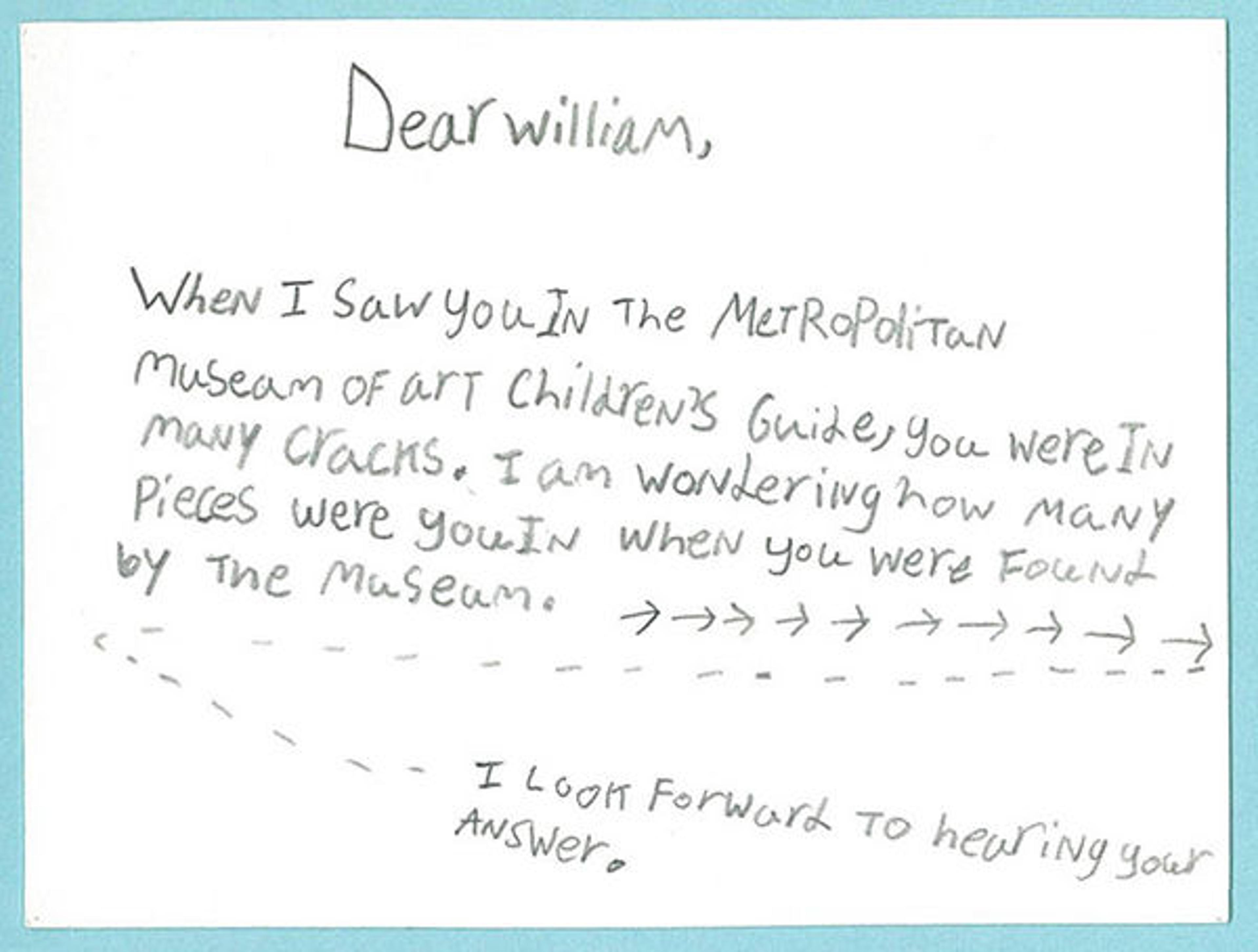Year after year, letters from kids around the world flood into the Met. Some curious kids send us their most pressing questions, like what we would save in an emergency, or how many works of art do we have in the entire Museum. Others send in their completed Kids Q&A guides, or get inspired by E. L. Konigsburg's book The Mixed-Up Files of Mrs. Basil E. Frankweiler and tell us where they would hide if they ran away to The Met.

William the Hippo in Gallery 111 in September, 2015. Photograph by Mark Morosse
Even our artworks receive letters, like this one from a kid named Eli addressed to the unofficial Museum mascot, William the Hippo:

Eli's letter to William the Hippo. Image courtesy of the author
Thanks for your question, Eli! Even though William can't write back, we do have a team that reads all of the letters that come our way, and they do their best to respond to as many as they can. Associate Curator Isabel Stünkel and Conservator Ann Heywood tackled this question:
William came to the Museum as one piece. However, he was missing three of his legs, which were purposefully broken off in ancient time. Hippopotamus figurines such as this one symbolized life and rebirth, but the hippopotamus was also known as a very dangerous animal. The ancient Egyptians believed that depictions of living creatures could magically come alive, so his legs were broken to protect its owner. Only William's front, proper left leg is ancient, the other three are modern reconstructions. The cracks you see are only in his glazed surface and don't go all the way through. They probably happened when this statuette was fired and then cooled. Since the body and the glaze possibly cooled down at different speeds, the glaze cracked! These cracks were probably not very visible at first, but over time (he is nearly four thousand years old!) they became more visible. This is because the cracks weathered more easily than the parts protected by the glaze.

Figure of a Hippopotamus. Middle Kingdom, Dynasty 12, reign of Senwosret I to Senwosret II (ca. 1961–1878 B.C.). From Egypt, Middle Egypt, Meir, Tomb of Senbi. Faience; L. 20 cm (7 7/8 in.); W. 7.5 cm (2 15/16 in.); H. 11.2 cm (4 7/16 in.). The Metropolitan Museum of Art, New York, Gift of Edward S. Harkness, 1917 (17.9.1). Photograph by Anna-Marie Kellen
You can visit William at the Museum. He's usually in Gallery 111, but from September 12, 2017 through April 1, 2018, he will be on view in the display Conversation between Two Hippos in Gallery 107.
Do you have a question for the Museum? If so, you can mail it to us here:
The Metropolitan Museum of Art
Education/#MetKids
1000 Fifth Avenue
New York, NY 10028
We look forward to reading all of your #MetKids questions!